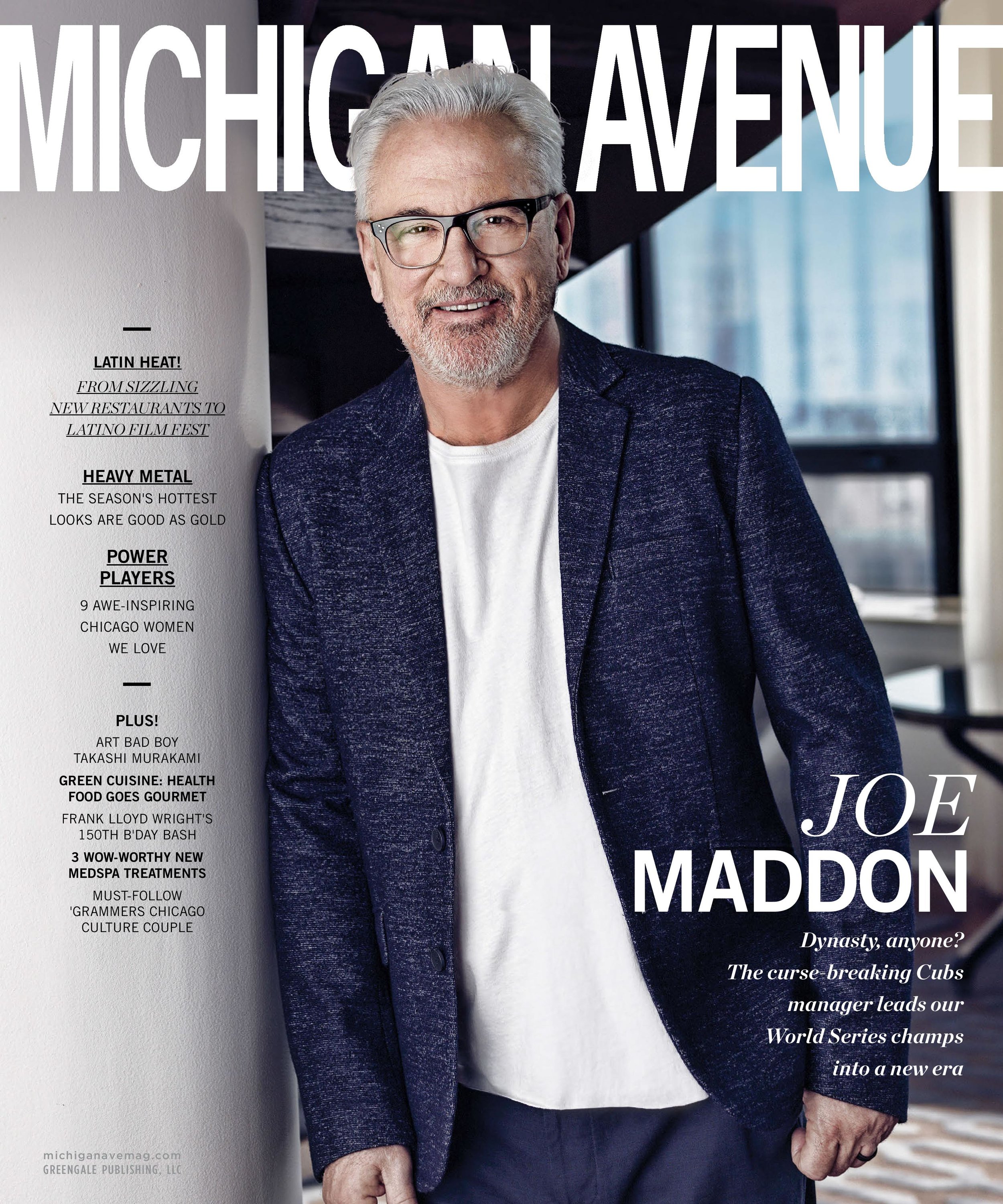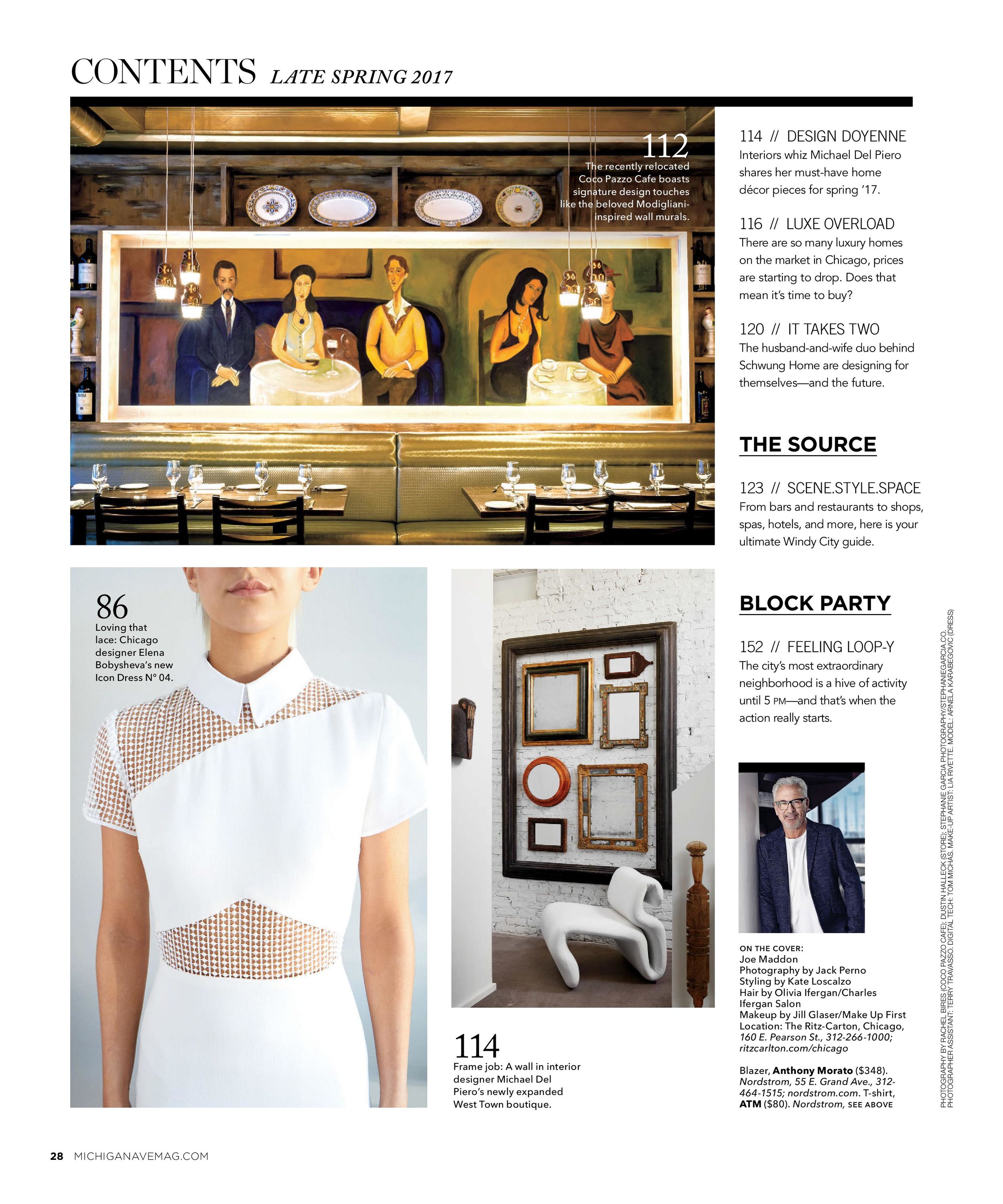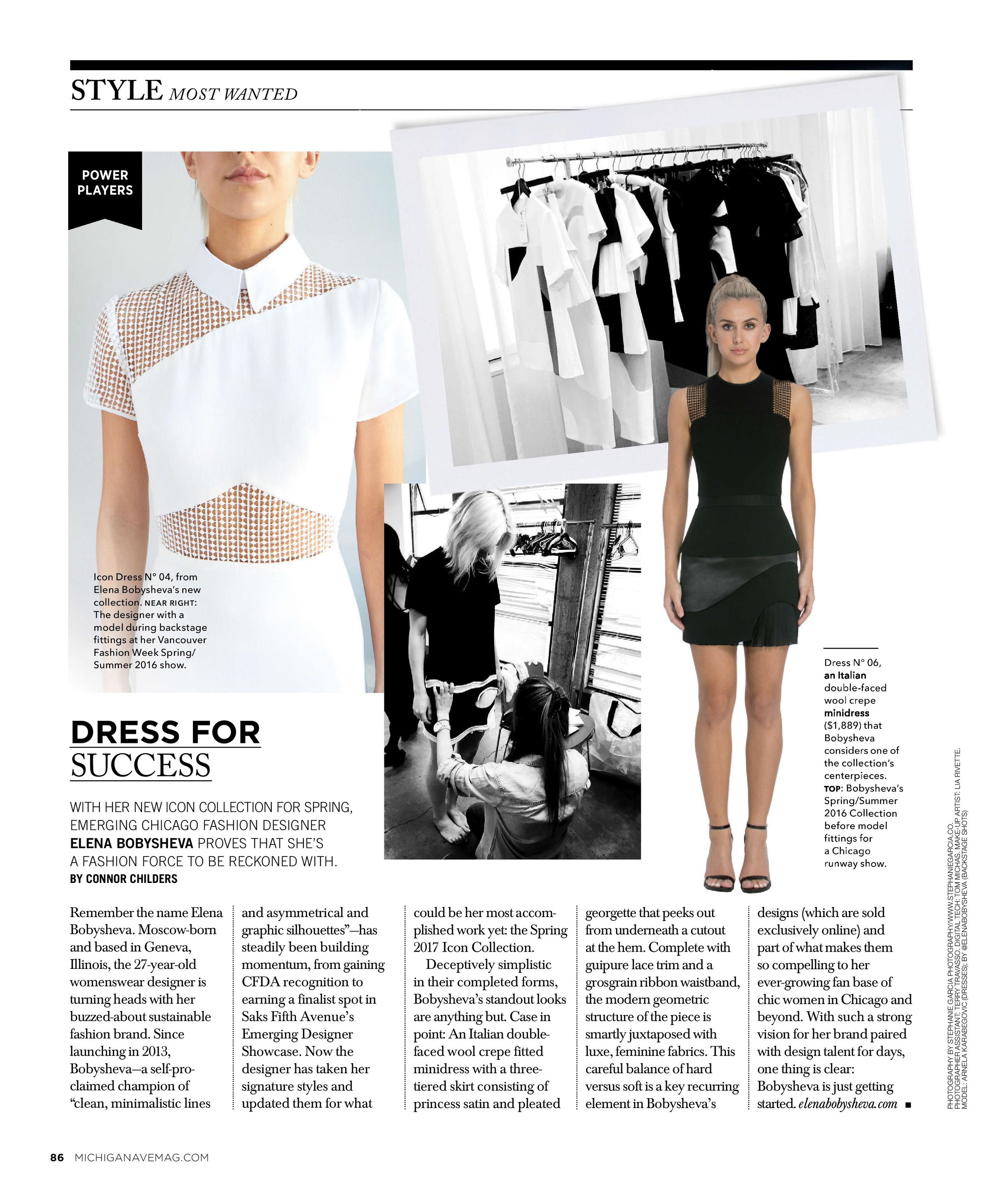MICHIGAN AVENUE MAGAZINE INTERVIEW
Q: Can you explain the DNA and identity of the Elena Bobysheva brand? And what you feel that your brand represents?
A: I wanted to create a brand that reflects a slower pace and process: where things are made with care and detail, where tradition is more important than trend, where there is a purpose to every piece, and things are made to last. Each garment is an item into which I could pour my aspirations —made with impeccable construction and uncompromising, noble materials. Combining my deeply held values of sustainability and animal welfare with luxury, I wanted to challenge myself and design long-lasting garments that hold memories for the woman who wears them. She is an ambitious woman, intellectual, sensitive, and powerful, but there is much action in her life and these clothes are her uniform, her armor.
Q: With the release of images from your Icon collection becoming available as of March 1, it can be inferred that you are focusing on a "See Now, Buy Now" approach. Can you explain why you have decided to convert to this strategy?
A: We live in a digital age where there is a misalignment that has grown between how designers do business and how people shop today. I do see the problem in forcing customers to wait 6 months before the collection becomes available to them but I am still going to approach this strategy in the most sustainable way possible and offer the collection on a pre-order basis first. We are cutting the delivery time down by half but don't end up over producing and using unnecessary resources. I am currently in experimental mode and have not decided to whether I will pursue this strategy for future seasons.
Q: Please explain the inspiration behind your Icon collection. Also, do you have images of the collection that I could take a look at for reference when writing this piece?
A: My brand is turning 3 years old and I wanted to look to my past as I re-brand with a more focused identity. This Icon collection features reworked versions of my signature silhouettes, some styles that have debuted in my first collection as far back as 2013, that have been redesigned in new colorways, fabrications, and updated with new design elements. My goal for releasing an Icon collection was because so many of my loyal customers continue to ask for the same designs. So I've created a tight edit of just 10 looks, featuring only dresses and skirts, which are my "hero" products. I'll keep it very fresh by releasing the collection, a group at a time, and we'll offer different styles every few months so you always have to come back to see what's new. I hope these updated, limited edition pieces will become staples in my customer's wardrobes and I am excited to revisit other archived designers as the Icon collection continues to grow.
Q: Are there any new styles, silhouettes, and design elements that you are excited about that come with this Icon collection?
A: All the dresses in the collection are quite complex to construct and feature fresh, updated design details so that satisfies my creative side but the ones that caused the most sleepless nights was Icon Dress #005 and #006. Both are cut from a luxurious Italian double face wool crepe and feature a three tier skirt with a peek-a-boo georgette pleated trim in the third tier. Dress #005 consists of a white monochromatic color scheme with a faux suede accent, while Dress #006 comes in classic black, the bodice features a giupure lace trim, with the second tier accented by a luxe princess satin. Each tier is asymmetrical, fully lined, and the style lines extend towards the back, making it a bit tricky to sew. It's important to me that my dresses look good from all angles, not just the front. The bodices alone took something like 8 hours to construct and the tiered skirt definitely takes a couple days.
Q: Is there one specific style of garment that you are known for amongst your clients? A signature if you will? If so, what would you say that it is?
A: My signature dress is definitely the pencil-skirted sheath that hits below the knee. I love things with a functionality aspect to them so all my signature knee-length dresses feature a full length exposed zipper in the back, that can be adjusted to create a split. My dresses may seem quite simple, but that's deceptive: there is a lot of seaming detail that helps sculpt a woman's body and give the illusion of sleekness and sometimes I eliminate seams all together for an even cleaner front by tailoring the pattern. Also, I think a good-quality fabric is key to making clothes that will fit and last - so the double face wool crepe I use glides over the body as it hides all the lumps and bumps while holding in the right parts. It also has a nice stretch and recovery so the dresses have the ability to fit many body types while still maintaining its' form. The signature dresses give my customers a little waist (some of them feature a grosgrain waistband, which is a proper dressmaking technique) and they are great on the bottom too.
Everyone is always surprised by how nice the dresses are for a relatively new and fairly unknown brand but majority of the budget goes towards product development and research. Everything I design has a sophisticated take on it and it's so important to me that the clothes are exquisite and beautiful on the inside as they are on the outside. It's truly something I agonize over and I spend a lot of hours perfecting the fit and proportiond. I am definitely one of those designers that if something is off by 1/8", I will stay awake at night thinking about it.
Q: What is your favorite piece from the Icon collection? Or your opinion of the "masterpiece" from the collection? (I know this is probably like choosing between one's own children - apologies in advance!)
A: I truly love all the dresses, I'm so proud of this collection, and can't wait to wear every single one but my personal favorites (I have two) are the tiered mini dresses just because they each took such an incredible amount of effort and construction, yet the finished product looks so well thought out and polished and not over worked.
Q:Can you describe your story to me? How you founded your label and what your brand mission is?
A: I started this label in 2013 in my early twenties straight out of design school. I used the grants I won from design and business competitions as my seed money. My very first season, I was approached by a buyer and my label was picked up by a high-end specialty boutique in Chicago and that was the catapult that confirmed to me that this is my path and I better utilize this opportunity. Since then I've grown up and this new collection reflects that. It's sort of my "re-brand" with a more focused identity. When I was in school, eco-friendly was just starting to gain traction and I wanted to create a line that reflects refinement, restraint, and relevance but was also sustainable and cruelty free at the same time. So few people associate luxury with sustainability and I wanted to contribute in changing that perception without compromising on quality or design. I'm sustainability focused in all aspects of my business but the bottom line is that the product needs to speak and sell itself, the sustainability aspect is a nice bonus but I think it's no longer an option for any business to choose not to be sustainableon a planet with finite resources.
Q: It seems that graphics, clean lines, and bold color are three motifs that are frequently found in your work, would you say that these are all part of the Elena Bobysheva DNA?
A: The graphics and clean lines - yes, I naturally seem to gravitate towards minimalism and geometry. I like shapes and numbers - I'm very spiritual and into numerology. The bold color was more of an experimental phase rather than a consistent thread. And I say that because I am not someone that wears a lot of bold color in real life so it was surprising how colorful my Spring 16 turned out to be. The color did not feel forced as I was designing. That is my most colorful collection to date. But I wanted to challenge myself, exactly for that same reason and experiment with not just color blocking but shape blocking as well - which those types of seams are not easy to sew. I never want to plateau as a designer. Overall, asymmetry, pleating, and monochromatic textile combinations are definitely a consistent theme.
Photography by: Stephanie Garcia


